Something about the knock at the front door made Mary-Scott Hunter think a neighbor was in trouble. She had just arrived home from her job at a corporate training company, and she was mulling over an earlier fight with her girlfriend, but the sound jolted her out of it: five loud, fast raps. She could see two men looming through the window, dressed in oddly formal clothing. When she cracked the door, they identified themselves: a Minneapolis police officer and an FBI agent.
Oh shit, Hunter thought. What have I done wrong? She wasnt sure if she should open the door. She didnt trust cops all that much. She let them in but remained standing, uncertain, as they settled into her living room.
The men asked Hunter if she had been raped in 1987. Yes, she said.
For more articles read aloud: download the Audm iPhone app.
They told her they had identified the stranger whod broken into her house when she was 21 years old and attacked her in the hallway outside her bedroom. The suspects name was Darrell Rea. After 31 years, he was in custody.
First came the shock. Then reliefand, finally, happiness.
Seriously? she asked.
Sergeant Chris Karakostas, a homicide investigator at the Minneapolis Police Department, assured her it was true. He asked her if she wanted to sit down, so she did, and she listened.
From the perspective of police, Hunter had done everything right back in 1987. Shed immediately called the cops, allowed a nurse to collect a rape kit, and recounted the attack in painful detail during multiple police interviews. But the rape had taken place four years before the state forensics lab began testing DNA, and other leads went nowhere. For decades, Hunter lived with the uncertainty of whether her rapist was still out there.
Yet while Hunters case went dormant, Rea came under suspicion for a slew of other crimes. Police came to believe that the former apartment building caretaker could be linked to a number of sexual assault, physical assault, murder, and missing person cases, according to a criminal complaint. But he was never convicted of serious charges.
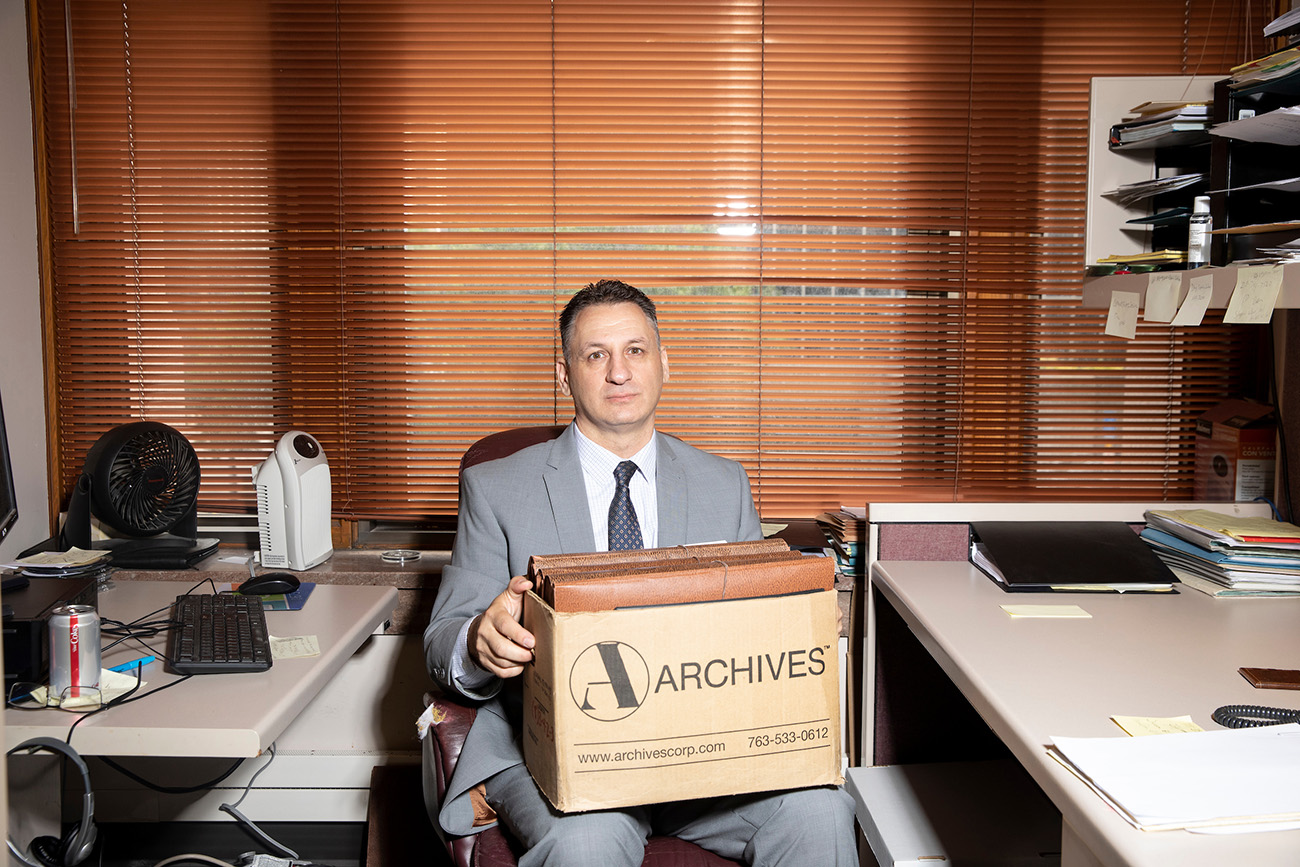
Theres a lot of women out there that really dont have some justice for what happened to them, says Sergeant Chris Karakostas.
Then, in 2013, the state crime lab matched DNA from Rea, by then in his late 50s, to the 1983 murder of a 17-year-old, Lorri Mesedahl, who appeared to have been raped before she was beaten to death near railroad tracks in north Minneapolis. But because the crime was so old, many witnesses were dead, and prosecutors wanted more than the DNA match from the victims body to charge Rea. So investigators ramped up their testing of the citys old rape kits. Thats when a hit came back for Hunters 1987 attack.
By the time the investigators told Hunter about Rea in March 2018, she had given up hope the case would ever be solved. I stopped fantasizing about this guy getting caught a long, long time ago, she tells me.
Today, Hunters experiencethe knock at the door, the detective bearing unexpected newsis becoming less of an extraordinary occurrence. After decades of shelving untested rape kits and otherwise mishandling many reports of sexual assault, police departments are now making progress on long-unsolved rape investigationsdue to unprecedented political will, new investigative techniques, and increased funding for DNA analysis.
In Michigan, for instance, an effort to test about 10,000 rape kits since 2009 led to the identification of at least 833 suspects who could be linked to multiple sex crimes. A state-funded effort to test old rape kits and hire new investigators and prosecutors in Cleveland has produced about 370 convictions since 2013. And a $38 million program created by the Manhattan district attorneys office paid for the testing of 55,000 rape kits across the country from 2015 to 2018nearly eliminating the pileup of untested kits in seven states. More than 20 states have recently passed laws requiring rape kit testing, audits of untested evidence, or systems for survivors to keep track of their kits, according to the Joyful Heart Foundation, an organization that advocates for sexual assault survivors. Meanwhile, police departments are rapidly adopting new approaches to solve sexual assaults, including genetic genealogya technique that identifies offenders by comparing crime scene DNA to consumer genetic profiles stored in public, online databases.
Even when these cold cases are solved, the legal system still prevents some survivors from getting justice. As Karakostas explained to Hunter as he sat on her couch, the window for prosecutors to press charges against Rea for her rape had long passed. At the time the attack occurred in 1987, Minnesotas statute of limitations for criminal sexual offenses involving adult victims was just three years.
Statutes of limitations are meant to protect defendants from false charges based on faded memory or degraded evidence. But they can also be a way for rapiststo remain free in a criminal justice system that convicts assailants of a felony in just 5 out of every 1,000 rapes, according to estimates from the antisexual violence organization RAINN. Over the past couple of decades, often following cultural upheavals like the Catholic child abuse scandal and the #MeToo movement, activists have fought to abolish or lengthen statutes of limitations, with mixed success.
Currently, at least seven states have no statute of limitations for any felony sexual offense. Dozens, including Minnesota, have lengthened the time given to prosecutors to bring charges, or added exemptions for cases with DNA evidence. Still, these reforms dont help survivors like Hunter, whose case expired before thenew lawstook effect.
But, as in most states, there is no statute of limitations for murder in Minnesota. So after Hennepin County prosecutors charged Rea with killing Lorri Mesedahl, they hoped Hunter would play a role in putting him away. Similarities between the attacks might bolster the prosecutors case. Before he left Hunters living room that evening in March, Karakostas asked if she would help.
Hunter instantly agreed. Taking part in the murder trial could be a way to recover some of the feeling of control wrested from her three decades prior. Shed never really forgiven herself for giving up that control, even though there was nothing to forgive; even though she knew, intellectually, that the rape was not her fault. The idea of being able to prosecuteor be involved in a prosecutionwas part of that want to be able to do something positive, to enact a result, Hunter, whos now 54, tellsme.
She pauses for a moment. Dude should pay, she adds.
The investigation that led officers to Hunters front door was long and circuitous. Minneapolis police had been looking into Darrell Rea for more than 40 years, slowly uncovering a series of women and girls they believe suffered at his hands: a terrified child, a troubled teenager, a marginalized sex worker. Each case proceeded in fits and starts, hindered by problems common to sexual violence investigationswitnesses dropping out, police bias against certain types of victims, and expiring statutes of limitations. (Through his lawyer, Rea broadly denied the criminal accusations against him and declined to answer specific questions or comment further on the allegations detailed in this article.)
In 1990, the Minneapolis Police Department got the call that would eventually prove crucial in bringing Rea to justice. Seventeen-year-old Victoria Owczynskyor Vicky O, as police investigators have long called herwas reported missing after disappearing on August 26, 1990. In a photograph circulated in a missing person bulletin, she smiles broadly, wearing a baggy sweatshirt and big earrings; permed, dark hair frames her face in a cloud.
According to retired Minneapolis Police Sergeant Tim Opdyke, who later picked up the investigation, the first sergeant assigned to Owczynskys case believed maybe she disappeared voluntarily on her own, he says. You know, 17 years old. She just ran away. But it was hard to square that with the fact that Owczynsky had left behind her money and cigarettesan unlikely choice for a teenager planning to skip town.
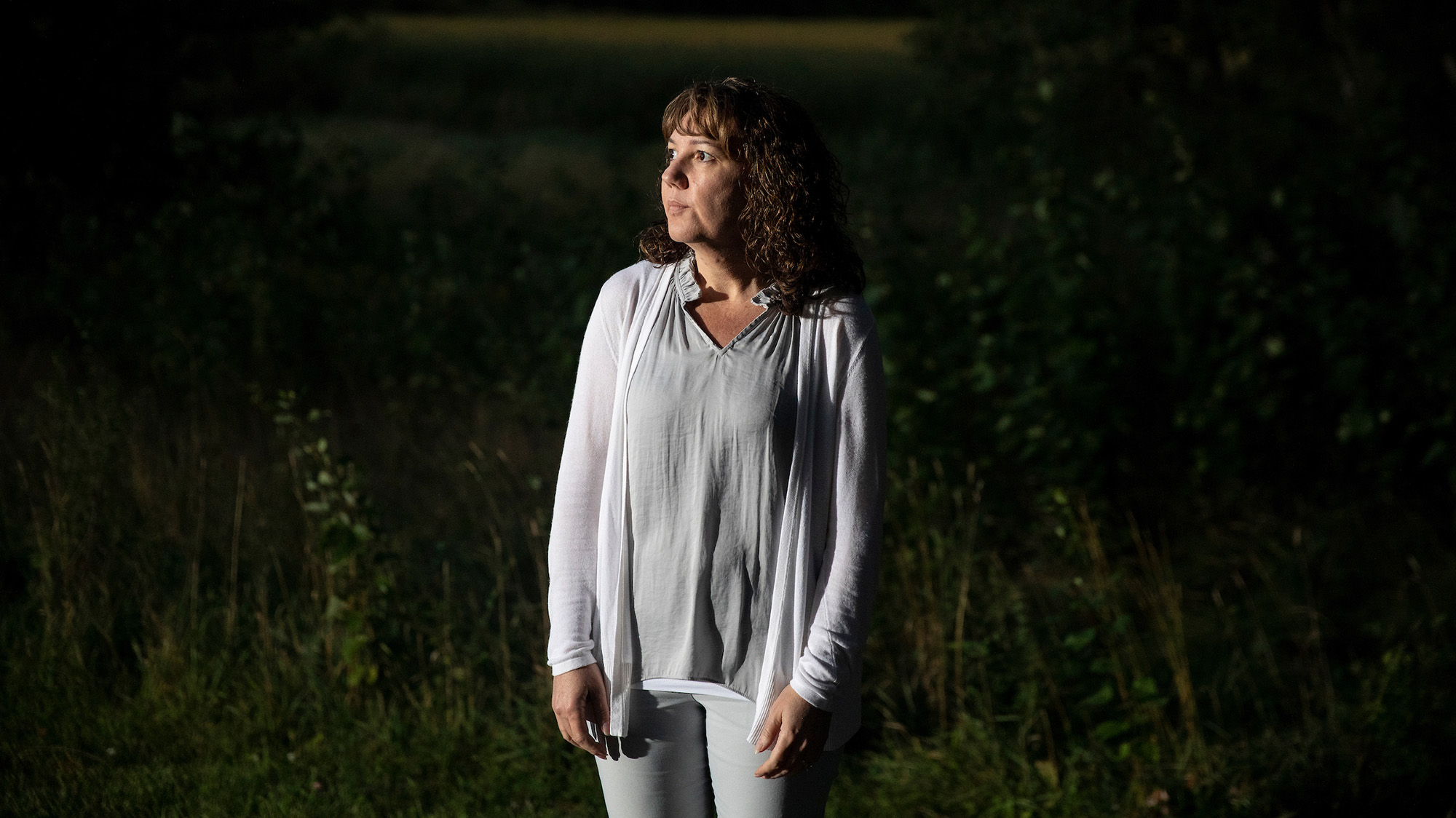
Naomie Rondo, 45, says her stepfather Darrell Rea abused her when she was a child.
At the time she disappeared, shed been staying with a friend, Naomie Rondo, in northeast Minneapolis. Rondo was one of Reas two stepdaughters. A neighbor told a police officer he had seen Owczynsky sitting in Reas pickup truck on the day she vanished.
By this point, Rea was not a stranger to police. In 1977, he had been accused of raping a woman after picking her up along Minneapolis Lake Street. Police found the woman covered in blood, crawling back toward the road; she later told them she had escaped by fighting off her attacker, who had a large knife, with a glass Coke bottle she found on the car floor. Rea was identified and tried for first-degree criminal sexual conduct and aggravated assault. But after he argued that the intercourse was consensual, a jury acquitted him of those charges and convicted him only for simple assault, landing him in jail for a short time.
About 11 years later, police got a report that Rea was abusing his stepdaughters. Rondo,now 45,says Rea would fondle her while washing her or tickling her, or put a hand down her pants while she was sleeping. At least once, he locked her out of the room and assaulted her older sister, Monique Stevens, while Rondo pounded on the door, crying. Stevens, now 48, has a vivid memory of looking at her second grade teacher and wondering if she should tell her how Rea pressed his body onto hers. I better not, she thought. She didnt tell anyone for years while Rea was entering her room at night, progressing from fondling her to raping her, punching, choking, and hitting her head against the bed frame. She would drink coffee at night to stay awake. Stevens says she believed that if she let the abuse happen, Rea wouldnt hurt her mother or siblings; that if she was quiet, her family could stay together. Only when Rondo reported the abuse to her school in the late 1980s did police get involved.
But after investigators questioned the girls, the family stopped cooperating with law enforcement, according to Karakostas. While prosecutors can press child sex abuse charges without the consent of a parent or guardian, they must believe they can meet the legal burden of proof to move forward. Once the family pulled out, neither of the two Hennepin County prosecutors who reviewed the case would bring charges.
Stevens says she used to babysit Owczynsky, who was a few years younger and often stayed at their house. She says Owczynsky was the only person who directly witnessed Rea raping her. Police working the Vicky O missing person case searched Reas home and car in 1990. When officers interviewed Rea, he denied that Owczynsky had gotten in the truck with him, Karakostas says. They never found enough evidence to arrest him for the girls disappearance.
But over the years, the Vicky O case would bring Rea under the police departments scrutiny time and time again. More than a year after her disappearance, Sergeant Opdyke and his partner, Sergeant Phil Hogquist, picked up the Owczynsky file from a box of unsolved cases. They, too, became fixated on Rea, who was by then in his late 30s, living and working as a caretaker in a shabby northeast Minneapolis apartment building. When they brought him in for questioning, Opdyke remembers thinking Rea was unnaturally calm under stress, and that he was using the interview to get information from the investigators. By the time the interview was over, I was flat-out accusing him of the murder of Vicky O, and he never reacted, Opdyke says. Never once got upset. He was there to find out what we knew.

Karakostas, a homicide investigator at the Minneapolis Police Department, spent years gathering evidence in Reas case.
While Opdyke was convinced that Rea was guilty, prosecutors werent. Opdyke says he was told that without a body, or more concrete evidence, they could not press charges.
But there was, possibly, another way to get to Rea. Given the 1977 assault case and the report regarding his stepdaughters, it seemed likely that they were dealing with a repeat offender. To that end, Opdyke and Hogquist learned from a fellow investigator of yet another caseRea might be involved in. In 1988, a 23-year-old homeless sex worker named Barbara, who asked that we use only her first name, had been attacked under circumstances similar to the details alleged in Reas 1977 trial, including the location. Barbaras case had gone cold, but it had one crucial difference from the other incidents: There was DNA evidence.
Barbara was walking to a White Castle near Lake Street one early morning in June 1988 when a man flashed money at her from a silver station wagon. They drove to a parking lot near some railroad tracks and had sex, and then, she tells me, he wouldnt stop. Barbara fought backscrapping and scrapping, just kicking and fighting and punching and kicking, she says. One of her hits must have drawn his blood; it dripped onto her shirt. Then the man jammed a tool resembling an ice pick into the hollow at the top of her neck.
The blow, somehow, didnt kill her. Barbara, her face pressed against the floor of the passenger seat, played dead as the man drove north into a quiet, leafy neighborhood. I just didnt know how bad I was feeling, but my mind was still working, she says. When she felt the car turn a corner, she leaped to open the door and rolled out of the station wagon. Struggling to grab her, the man crashed the car into a tree. He fled the scene as lights began turning on in the surrounding houses.
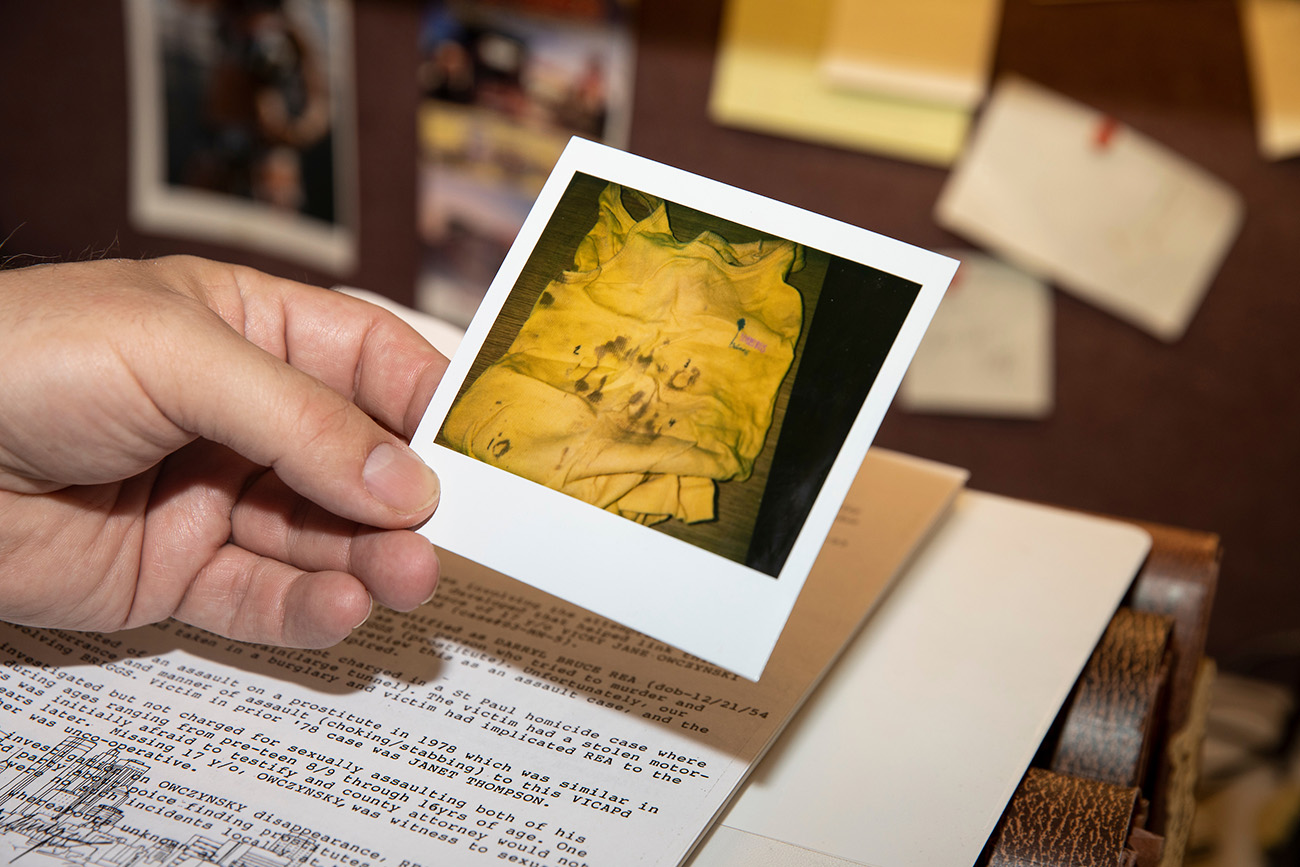
Karakostas reviews evidence in the Rea case.
Police later tested the bloodstain left on Barbaras shirt for protein and blood typeDNA testing was not yet availableand ruled out the first person they arrested for the attack, according to the Hennepin County Attorneys Office. Then they let the case fade away. It sat on somebodys desk, or got passed around, says Hogquist, who recalls feeling frustrated that there was a broad tendency to neglect sexual assault cases in the department. It was even worse for sex workers, anotherinvestigator tells me. Society was like that back then, says Barbara, who is now 54 and works as a nurse. She doesnt think attitudes have changed. Put yourself in harms way? Thats what you get.
But by 1993, five years after the attack on Barbara and three years after the disappearance of Owczynsky, the state crime lab had started testing DNA evidence. Working with Opdyke and Hogquist, the Minneapolis police lieutenant who had investigated Barbaras rape years earlier drafted a search warrant for Reas DNA. They obtained a sample and compared it to the bloodstain from Barbaras shirt. It matched.
Yet when the investigators brought the case to prosecutors, they were rebuffed: The three-year statute of limitations for both rape and attempted murder was already up. While a 1991 law extended the prosecution window to seven years for most criminal sexual offenses, it only applied to new cases, or cases in which the statute of limitations had not already run out. Barbaras case had expired less than seven weeks before that law was enacted.
Not until a couple of years ago did anyone tell Barbara about Rea. At first, she says, she was gladbut then I thought, There aint nothing I can do about it. Its just one more way in which she feels like the legal system failed her. As violent as a crime like that, they should never have a statute of limitations. Its ridiculous.
For Opdyke, Hogquist, and the other investigators, the dead end in Barbaras case deflated their hopes of catching Rea. Thats where all our investigation ended, says Hogquist. We got shot down. The Owczynsky investigation, too, went quiet.
When Opdyke retired in 2006, he made a copy of the Vicky O files to take with him to Florida. That was a case we carried with us when we left, he says. Thinking about Rea still gives him goosebumps.
It was like the one who got away. I always thought we had the right person, but wemeaning [Hogquist] and I, and the police department at the timewere never able to do anything about it.

Barbara
Raped and stabbed in 1988
On escaping the station wagon where she was raped: The whole car just got fuming, sweaty, windows forming sweat and fog, and he wouldnt stop, and it was going on and on and onI was just hoping somebody would hear, somebody would see, and instead, I felt like I had to give upBut I felt a stab in my back and my neck. I found out later it was an ice pick. So I played dead. That was not easy to do. And I dont know if he saw somebody coming or whatIm just still trying to figure that out[but] he put a piece of carpet over me to hide meI felt the car start up, and he started moving. I just didnt know how bad I was feeling, but my mind was still working, and I could peek out through this hole of this carpet and see the lock and the door handleSure enough I felt the turn with the car. So thats when I did itjumped, got one hand on the lock, one hand on the handle and did them both at the same timeI got out, I just slid my body out and clumsily started running upThank God he did leave, because he wouldve got me again.
Listen to Barbara tell her story:
It would be almost 20 years before the Minneapolis Police Department would make significant progress in their investigations of Rea. Again itd be because of Victoria Owczynsky, the 17-year-old who had been friends with his younger stepdaughter.
Owczynsky, or her body, still had not been found, but in late 2007, Sergeant Gerry Wehr came across her missing person file. He was on light duty at the time, recovering from hip surgery, with an assignment to look for cold cases that showed promise. Wehr says he liked reading files from the crammed archives stashed in the clock tower of Minneapolis City Hall, retracing the steps of old investigations. Its dusty, dirty, its kind of dark, and there are just boxes everywhere, Wehr says. Of course, nothings in order.
His interest had been piqued after policegot a call that a relative of Owczynskys was using her information to get welfare benefits. So box by box up in the clock tower, Wehr continued working the case for years, learning about the teenagers disappearance, and about Rea, and, eventually, Barbara. With the help of the FBI, he started developing a criminal profile of Rea, uncovering several other attacks, mostly on sex workers, that seemed to fit his modus operandi. Over and over, those cases had been dropped, or not charged in time. Sometimes there was simply not enough evidence. But other times the reason was bad police work, Wehr admits; in particular, cases that involved victims who did sex work languished.
The haphazardly stored, jumbled archives made progress slow. It took nearly five years of investigating before Wehr pulled a crumpled piece of paper out of a box: the search warrant for Reas DNA from Barbaras case. Wehr had long been hoping for DNA evidence to help his search and he knew that Reas DNA sample, as well as the blood from Barbaras shirt, could still be in evidence. I just knew there would be something that would come up if we entered it in the system.
Both samples were still in storage. In 2013, the state crime lab reanalyzed the sample from Barbaras shirt and Reas DNA, confirming the match using more advanced testing. Then the lab uploaded its new DNA profile from the bloodstain into a database for crime scene evidence. Thats when the system returned another, unexpected hit: semen recovered from the autopsy of Lorri Mesedahl, the 17-year-oldkilled 30 years earlier. Wehr tells me he was surprised there was only one match for Rea in the database.
Mesedahls murder was not one of the cases Wehr had pegged to Rea. One Friday night in early spring 1983, after returning home from a party, Mesedahl had snuck out to go see her boyfriend. When she arrived at her boyfriends grandparents house close to 3 a.m., his grandmother refused to let her in. The next morning, Mesedahls body was found, facedown, surrounded by a pool of blood, next to railroad tracks. Semen was found in her vagina and rectum, as well as on the legs and seat of her pants. Not until 2008 would the samples be tested and uploaded to the system.

In 1983, Lorri Mesedahls body was found near these railroad tracks in north Minneapolis; the 17 year old appeared to have been raped and then beaten to death.
The Mesedahl hit blew the entire Rea investigation wide open: There was DNA and the statute of limitations on murder never expires. Finally, police had discovered evidence with a real chance of convincing prosecutors to bring charges.
Wehr was on the cusp of retirement. Before he left, he handed off the case to Karakostas, who once patrolled Lake Street as a young beat cop and had since become the departments cold-case homicide specialist. When you arrest [Rea], you got to make sure hes getting charged, Wehr remembers telling Karakostas. Because people have been doing this to him for 20 years. He gets called in on a rape, he gives them a story, and they threaten him and yell at him theyre going to charge him, hes going to prison. But nobody ever does. He walks away.
In part to see if they could bolster their case by finding more attacks linked to Rea, investigators ramped up their testing of old, neglected rape kits. In 2014, they found another victim: Mary-Scott Hunter, a young legal assistant who was raped in 1987.
By March 2015, Karakostas believed he finally had enough evidence and arrested Rea. But even then, it wasnt enough. Karakostas says prosecutors got cold feet and declined to charge him. Chuck Laszewski, the Hennepin County Attorneys Office spokesperson, says the county attorneys office felt it needed more evidence to prove beyond a reasonable doubt that Rea had murdered Mesedahl. Key witnesses had died, including the medical examiner who inspected her body. As Wehr had predicted, Rea denied everything and was released.
It would take another two and a half years and follow-up testing on Mesedahls clothes before prosecutors decided they were confident enough to pursue the case, Karakostas says. In September 2017, Rea was taken into custody again, and charged with second-degree murder.

Monique Stevens
Sexually abused starting in the late 1970s
On growing up in Reas house: He would watch me take a shower. I didnt even want to take showers. I got teased at school because I smelled sometimes. I mean, we were poor, so I got teased for my clothes even though we had uniforms, cause I have holes in my shoes. So I was traumatized at school, too. I was ashamed of my body, of myself, who I was. I didnt want people to look at me. I just wanted to stay covered all the time.
Listen to Monique describe growing up:
On trying to defend herself against Rea: I slept with a knife under my pillow. He would run upstairs. I would jump up on my bed, and scream and scream and scream, and my mom would come up and get him out of the room. And then there were nights she wasnt there, so hed rape me. And when she was there, Id do the same thing all over again. Scream and scream and scream, and shed come running up there. I would not sleep. I would drink coffee sometimes, Naomie would too, so we could stay awake.
Listen to Monique describe defending herself:
Mary-Scott Hunter was always a light sleeper, even on the nights she had been drinking. In 1987, she was 21 years old, working at a law firm and sharing a split-level duplex with three friends from Carleton College. We were all incredibly close, says Nina Levine, who lived upstairs. They bonded over the Grateful Dead and played softball together. (Hunters story first came to our attention through Mother Jones Editor-in-Chief Clara Jeffery, who became friends with Hunter in the years following the attack.)
Hunters housemates were somewhat worried about her; she was somewhat worried about herself. She had recently dropped out of school and was struggling. Maybe not eating enough, Hunter says. Drinking too much. She was trying to change those parts of her life. One Thursday night in March, she relapsed, going out to a bar, bingeing and purging, then falling asleep in her bedroom on the bottom floor of the duplex.
Around 4:30 in the morning, a noise woke her up. Then she heard it again, louder. She rolled out of bed and left her room to check on her friends. Thats when she saw theman at the top of the staircase. He wore a dark sweatshirt, the hood pulled tight around his face. In his right hand, he held a screwdriver.
Dont freak out, he said, according to her police report from that night. I just want to fuck you. If you freak out, Im going to stab you.
He forced her to the lower-level landing. Then he raped her for more than 30 minutes.
I was convinced, at one point, that somebody in the house would hear it, and the cops were going to come, Hunter says. But they didnt. As the man grew frustrated, she thought, Im going to die. She was stunned when he finished and left without killing her.
She immediately woke up Levine, who helped her call the police. When officers arrived, it just got surreal, Hunter tells me. It was a relief that they were there, but they were very nonchalant about the whole thing. Levine remembers watching an officer question Hunter and sensing he didnt believe her, as if she had invited the man to her house after going out drinking that night. She was shaking a lot, Levine remembers. She would start to talk, then get a little silent, then go back.
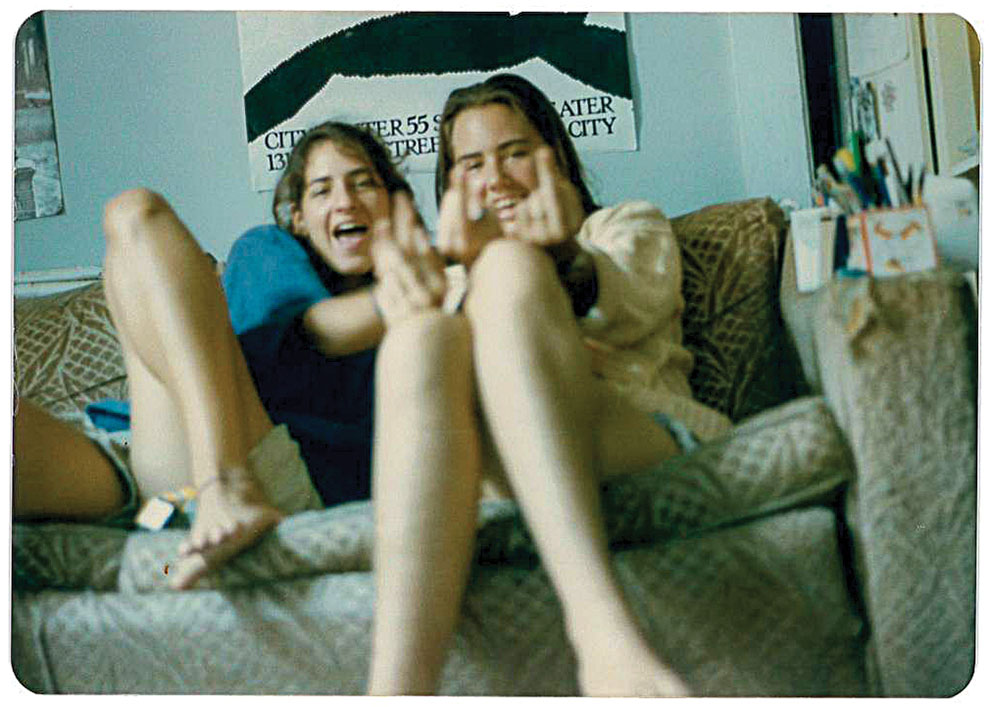
Mary-Scott Hunter (right) was living with Nina Levine in the mid-1980s when Rea broke into their home and raped Hunter.
Hunter recalls the lingering surprise that she hadnt been murdered. She remembers cracking jokes in the back of the police cruiser with Levine and another friend who accompanied her to the hospital. During her rape kit exam, a nurse wrote that Hunter was quiet, cooperative.
Only later, as she waited in the hospital lobby for a ride back to the house, did Hunter allow any darker emotions to hit her. She leaned forward in her chair and stared at the floor. I cant believe this happened, she recalls saying out loud. Levine put a hand on her back.
Im not typically somebody who kind of breaks down, so it wasnt that, Hunter recalls. I think it was the first time that I started to just be a little bit more in my body. And that was the startshe pauses, searchingof not wanting to be in my body.
A few days later, when Hunter sat down with a Minneapolis police sergeant for an interview, he asked her what she was wearing when she was raped, according to a transcript of their conversation. She answered his questions simply and completely. She wanted to help. When the sergeant identified a suspect and put together a lineup, she was frustrated with herself when she couldnt identify him. (Forensic testing eventually ruled that suspect out.) After the lineup, Hunter remembers, the investigation seemed to fizzle.
At the same time, she and her housemates were struggling to cope with what had happened. In the following weeks, Hunter slept on a mattress in their living room. She read and re-read feminist literature, and signed up for self-defense classes. The landlord fixed the window locks, installed an alarm system, and offered the housemates free therapy sessions with her husband, a psychologist.
As months passed, then years, Hunters struggles with mental health got worse, and, eventually, better. She got sober; she came out. I got to know myself, she says.
With time, she thought less and less about the attack and the still-open investigation. But she continued to question whether she had done enough to stop the rape. Those doubts still nag her: Why the hell didnt Ido more to fight? she asks. Is that some deficiency in me, that I clam up when Im in flight or fight? Why did I do the things I personally did? Did I not think I was worth fighting?
She knows its not her fault she was raped, knows its never any survivors fault. But knowing is a different thing than feeling it.
Only after Karakostas knocked on her door last year, after prosecutors finally decided to charge Rea, did Hunter come to a kind of peace with her doubts. Rea had killed before, she knows now. On the night hed attacked her, the same could have happened to her. Maybe I actually did have the right instincts, she says. If she had fought back, she might not have survived. Its let me off the hook a little.

Mary-Scott Hunter
Raped in 1987
On night terrors in the years after her rape: Ill just get stuck in a loop of auditory hallucinations, of being sure that I hear somebody inside the house, and theyre coming up the stairsI had even tried tricks, like I would imagineI have cats, and I know that if theres any sound in the house, the cats just run away. So for a while I was like, look at the cats. If the cats are not running away, and you think you see the cats sleeping, its not happening. But then my brain would catch up to me and make the cats jumpOnce I finally would break the loop, and Id wake up, and now I was actually awake Id see the cats are sound asleep, or had just run off, because usually what breaks this cycle is, I wake myself up screaming.
Listen to Mary-Scott tell her story:
On a sunny morning in late June, Hunter pulled on a black T-shirt emblazoned with the words nasty woman and biked to the Hennepin County Government Center in the heart of downtown Minneapolis to see Rea receive his sentence for the murder of Lorri Mesedahl. By the time Hunter arrived at a meeting with a victim advocate on the 22nd floor, Barbara was already there, seated at a small round table.
It had been almost two months since the women had learned that Darrell Rea had been convicted of second-degree murder with intent, after waiving his right to a jury trial. Explaining her ruling, Hennepin County Judge Tamara Garcia wrote that the DNA evidence in this case is compelling and that a guilty verdict was the only possible conclusion. While Reas public defender had tried to propose other potential perpetrators, none of the alternate theories added up.
Garcia had considered evidence not just from the killing of Mesedahl, but also from the 1988 attack on Barbara, which the judge determined was similar enough to Mesedahls case that it could corroborate the facts of the murder. But Hunters rape, Garcia decided, couldnt factor in to her verdict. While some elements of Hunters case were similar to Mesedahlsboth were young women, attacked with a weapon just a few miles apartthe assault had taken place in her house, not Reas car, and did not leave her with serious visible injuries. The allegations of sexual abuse against Monique Stevens and Naomie Rondo also were not considered. None of those crimes, Garcia ruled, shared enough details in common with the murder to be included in her deliberation.
Hunter had been crushed by that decision. Shed been holding out hope that the trial would give her a chance to finally do something, to act after years of stasis. She says she wouldnt have been afraid to take the stand. I would love nothing more than to be able to stand in front of [him], she says, to be like, Yep. Guess what. Im here. Giving you a little bit of payback.
The closest she could get would be to see Rea sentenced to prison. She wanted to be there, to put a face to the figure who had persisted in her nightmares for 32 years, but whose features had grown fuzzy in her memory. And she was curious about the other survivors. But what do you say to a stranger brought into your life through trauma that is somehow both shared and separate? In the meeting room high above the city, Barbara and Hunter greeted each other politely. Then they fell into a nervous silence.
Barbaras mind was racing. That morning, shed woken up early to dress for court, taming her long, curly brown hair and applying makeup, which she did rarely. Then she smoked a cigarette beside a heart-shaped pond shed built herself in her backyard, her space for peace and reflection. She knew she would be disappointed by the sentencing, but she wanted to see the criminal proceedings through to the end.
I just hope this turns out okay, she told Hunter in her quiet rasp.
Yup, Hunter answered.
A cardigan-clad victim advocate arrived to prepare them for the hearing. Rea, the advocate said, would not be taking responsibility for his crimes. He would not show remorse. He had family members supporting him in the courtroom. And neither Hunter nor Barbara would be allowed to deliver a victim impact statement in person. They could only submit a written copy to the judge.
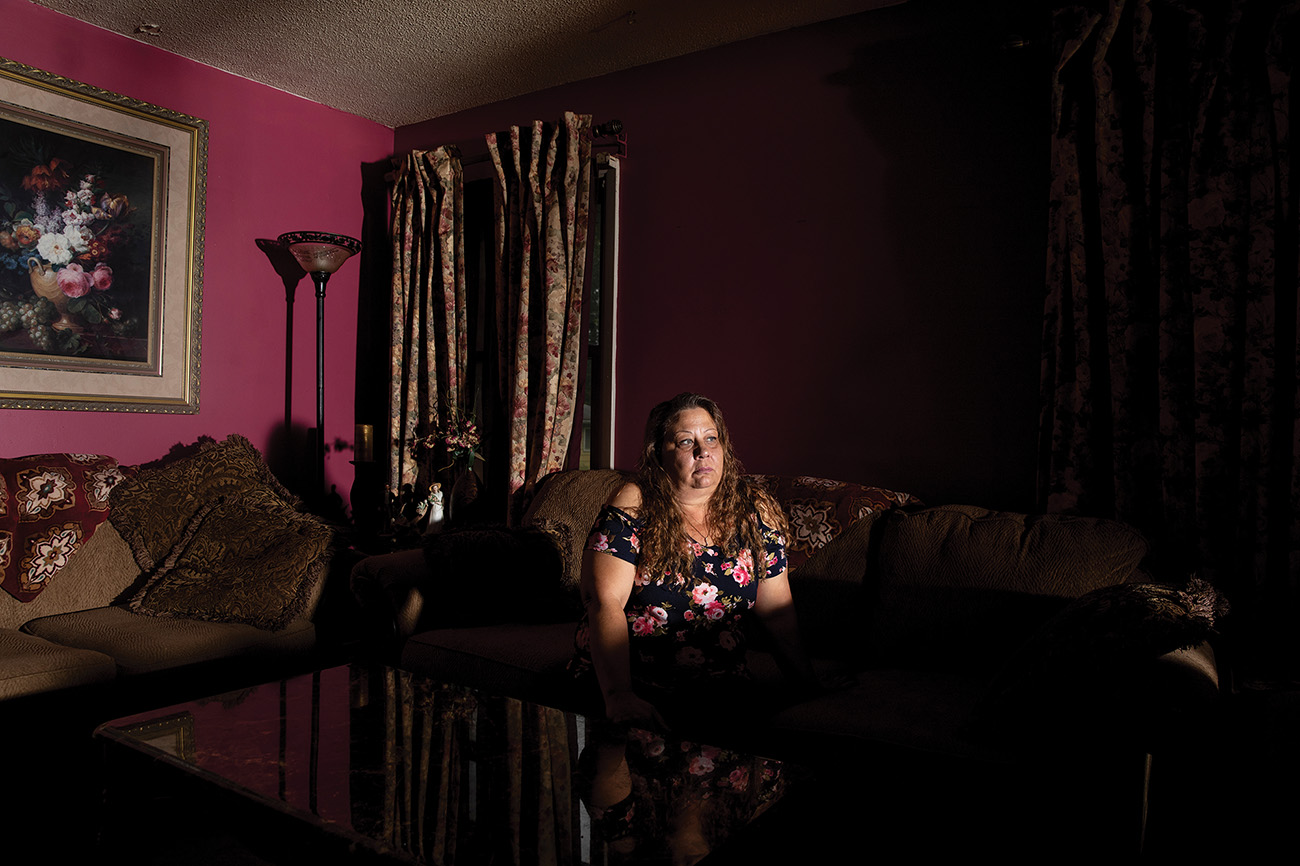
I was ready to just die, you know. I was letting go because I was exhausted. But I think the good Lord wanted me to survive. To press charges for Lorri Mesedahl, says Barbara.
Barbara could no longer keep from breaking down. She had spent hours practicing her statement in front of a mirror, imagining telling the judge how she was still scared, and angry that her case was never prosecuted: I have come to the conclusion I will never see justice. Welling up, she told the advocate about surviving other abuse and violence, before Rea, and how it had changed her, affecting all her relationships.
As Barbara spoke, Hunter sat very still except for her hands, which she was kneading. Suddenly she jerked in her seat. Goddamn these men, she said, turning toward the window.
Barbara caught her breath. Then, seeming to notice something, she turned to Hunter, whose short graying hair was tucked behind her ears. Were you brunette too?
Yeah, Hunter said.
A screwdriver?
Yeah.
Mine was a dull-ass ice pick. Barbara used a tissue to dab at the heavy mascara lining her eyelids. Do I got makeup all over my face?
You look great, Hunter said. Fierce. They rode the elevator down to the 13th-floor courtroom together.
Stevens and Rondo were there. Stevens, dressed in black, fought hard to stay composed; beside her, Rondos slight, tense frame betrayed her anger. They gripped each others hands as they waited first for the judge to appear, and then for their stepfather to be escorted to the defendants table. By the time Rea entered the roomnow 64, heavyset and pale, with a thick white goatee and mustachetears were streaming down Stevens cheeks. It wasnt that she was afraid of him; she had seen him once as an adult, at her grandmothers funeral a few years ago. Its that there were so many waysPTSD, struggles with intimacythat her childhood experiences still remain with her. I was held captive by him, and there was nothing I could do, she tells me. I would like to see him have to stay in there until he dies. Because Ive been in prison for almost my whole life.
The only statement permitted in the courtroom was from Lorri Mesedahls half brother. Darrell won the game, Del Young said, tearing up as he stood in front of the judge. To ever allow this man to walk these streets again puts the public at such an extreme danger.
A few minutes later, Garcia sentenced Rea to 10 years and one month in prison, the maximum permitted under Minnesotas sentencing guidelines at the time of the 1983 murder. With supervised release and the time he had already served while awaiting a verdict, Rea would likely get out in just under five years. If the statutes of limitations on Hunters and Barbaras rapes had not expired, and Rea was also found guilty for those crimes, his recommended sentence could have been more than 20 years, calculates Mike Brandt, a Minnesota criminal defense attorney who is not involved in the case.
Barbara admits it scares her that Rea will be out of prison so soon. But she also believes her role in convicting him is the reason why she survived his attack all those years ago; on the night he tried to kill her, she tells me, I was ready to just die, you know. I was letting go because I was exhausted. But I think the good Lord wanted me to survive. To press charges for Lorri Mesedahl. Mesedahl is buried a few blocks from Barbaras home. She visits the gravesite often.
In the current system, the only person were protecting is Darrell Rea, Sergeant Chris Karakostas tells me. The way the case unfolded is the result of bad policy, bad police work, bad county attorneys, the failures of the system to take care of people like him, Sergeant Gerry Wehr says. Its a wake-up call to make a better system. There is some hope things will change, and that this generation of sexual violence survivors will be the last to face the obstacles presented by narrow statutes of limitations. Minnesota long ago eliminated the ticking clock for any sexual assault where there is DNA evidence, but its prosecution window for other sexual assaults of adults now expires after nine years. In the past two legislative sessions, state lawmakers have rejected proposals, including one from former state Rep. Ilhan Omar (now a member of Congress), to completely abolish the statute of limitations on all sexual assault cases.
Hunter is still living with that impact. Some nights, she hallucinates the sound of someone coming up the stairs in her house. The night terror loops until she wakes up screaming. Closure, she says, is kind of a tricky word. Part of her is glad that Rea refused to accept responsibility in court. If he had apologized, she says, theres a burden on me. To process forgiveness.Barbara, Hunter, and Stevens told me they wish the law treated rape the same as murder, leaving cases open for as long as it takes for police to solve the crime. Having statutes of limitations for these sexually violent crimes is belittling and demeaning, Nina Levine, Hunters friend and former housemate, wrote to me recently. The law basically says, after X amount of years, the crime and its impact dont matter anymore.
Karakostas still isnt done with the case. He believes Hunters rape indicates there could be more crimes to uncover. I think any investigator who worked, even touched, this case, or knows anything about it, would agree that the probability that there are other victims out there, either living or dead, is probably pretty good, he says. After Rea was convicted of murder, he was legally obligated to hand over a new DNA sample. And unlike the bloodstain from Barbaras shirt, this one has been uploaded to the FBIs national database. From now on, it will be automatically compared to unknown DNA from crime scenes across the country and to results from the roughly 1,700 rape kits that Minneapolis Police have neglected to test since the 1990s. One day, Karakostas speculates, there could be another prosecution. In that future case, a judge could rule that the experiences of Hunter and Stevens count as corroborating evidence. Maybe they could still get their day in court. Theres a lot of women out there that really dont have some justice for what happened to them, Karakostas says.
Theres also still the big unanswered question: What happened to Vicky O? Over the years, rumors of where she may be have circulated through the police department. According to multiple investigators, the apartment building where Rea lived when Owczynsky disappeared in 1990 had an underground level, and at least one witness told the cops that he used to spend time down there. Its become the stuff of legend among certain Minneapolis cops that Owczynskys body might be buried underneath the building. One problem: The city condemned the building and tore it down in 1992. In its place stands the headquarters of the Minneapolis Police Departments 2nd Precinct.
Its a chilling prospectthat the body theyve spent decades looking for could be literally underneath the polices feet. Theoretically, Karakostas muses, youd have to take [the building] down. That seems unlikely, but like the investigators before him, hes still driven by the search for Vicky O, and Rea is still his number-one suspect. No matter what it took, he says, nothing would please me more than to find Vicky.
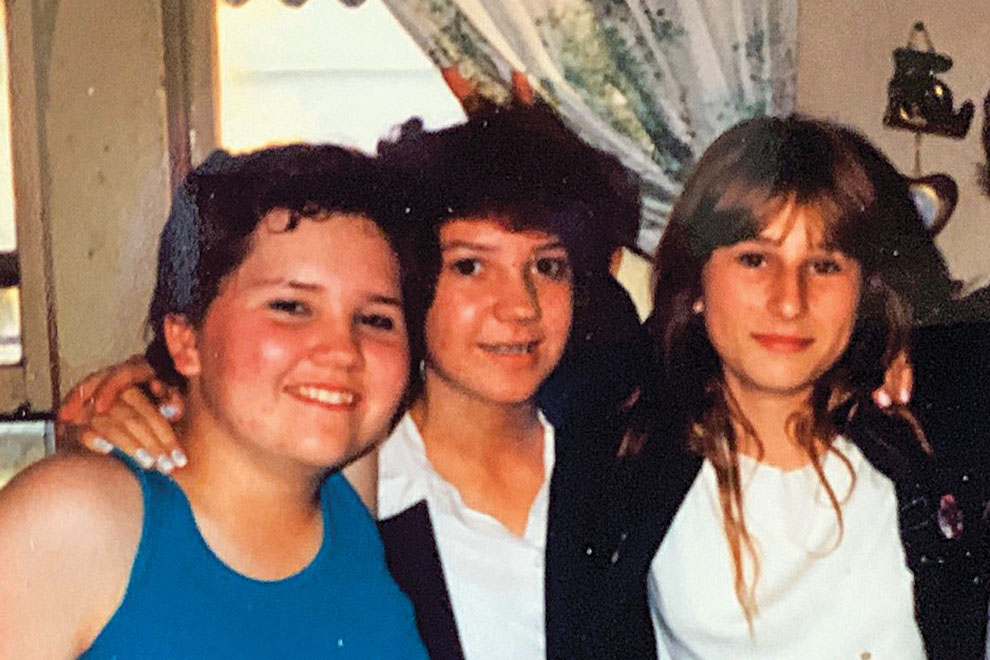
Darrell Reas stepdaughters, Monique Stevens (left) and Naomi Rondo (center), with their friend Victoria Owczynsky, who disappeared in 1990.
A previous version of this story was published online in June. The story, included in the November/December 2018 print edition, has been updated to reflected the sentencing of Darrell Rea.

